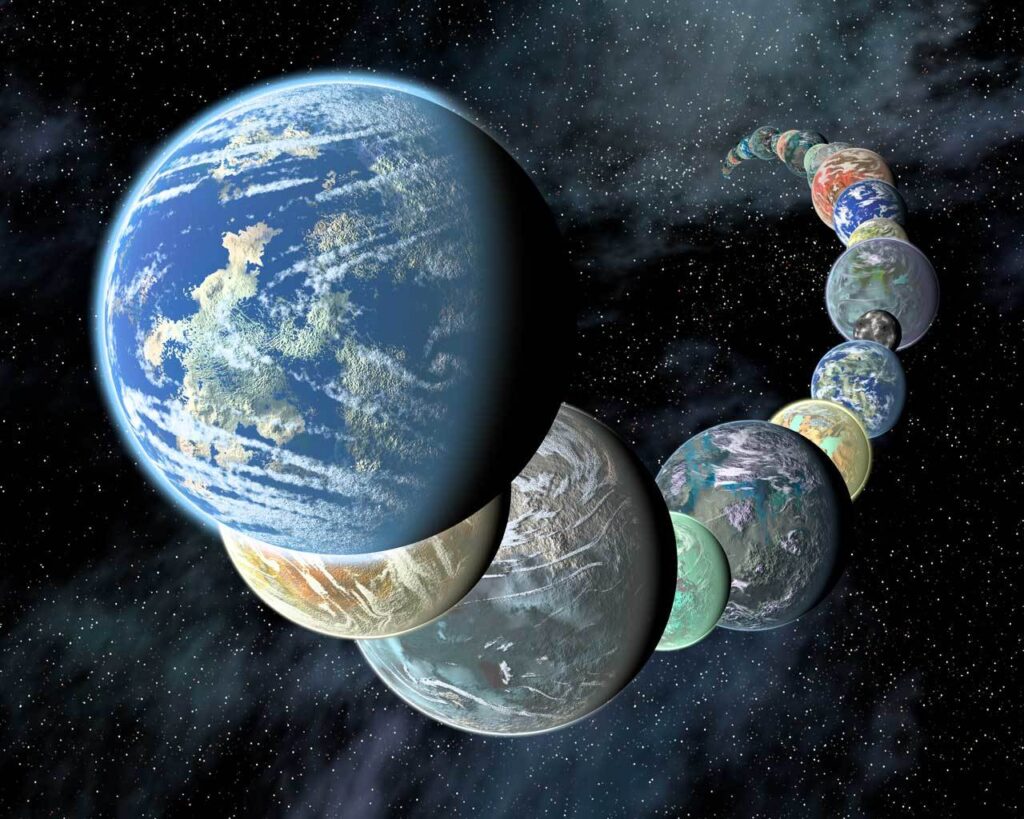Are we alone in the universe?
Credit: NASA/JPL-Caltech
Let’s get started!
Today we are getting to know about the new discovery of the outer world beyond our solar system.
Ready for the excitement!
The incredibly huge universe is everything. Not so long ago, we were in a universe with only a small number of known planets, all of them orbiting our Sun. But a new number of discoveries marks a scientific high point: More than 5,000 planets are now confirmed to exist beyond our solar system. Our nearest exoplanet is Proxima Centauri-b which is closer to our solar system.
The planetary odometer turned on March 21, with the modern batch of 65 exoplanets – planets outside our immediate solar family – added to the NASA Exoplanet Archive. The archive records exoplanet discoveries that appear in peer-reviewed, scientific papers, and that have been confirmed using multiple detection methods or by analytical techniques.
The 5,000-plus planets found so far include small, rocky worlds like Earth, gas giants numerous times larger than Jupiter, and “hot Jupiters” in scorchingly close orbits around their stars.
There are “super-Earths,” which are utmost probably rocky worlds bigger than our own, and “mini-Neptunes,” smaller versions of our system’s Neptune.
The collection archives record exoplanet discoveries that look in peer-reviewed, scientific papers, and that have been confirmed using multiple detection methods or by analytical techniques.
Add to the combination planets orbiting two stars at when and planets stubbornly orbiting the collapsed remnants of dead stars.
“It’s not just a number,” said Jessie Christiansen, science lead for the archive and a research scientist with the NASA Exoplanet Science Institute at Caltech in Pasadena. “Each one of them is a new world, a brand-new planet. I get excited about everyone because we don’t know anything about them.”
We do know this: Our galaxy likely holds hundreds of billions of such planets. The steady drumbeat of discovery began in 1992 with strange new worlds orbiting an even stranger star.
How the exoplanets are discovered?
We’re at present living in a golden age of exoplanet discovery. Although the existence of planets outside of our solar system had been previously proposed and worlds were only first discovered in the 1990s. exoplanets are the strange worlds orbiting around the even stranger star. It is a type of neutron star identified as a pulsar star. It was a type of neutron star known as a pulsar, a rapidly spinning stellar corpse that pulses with millisecond bursts of burning radiation.
Measuring small changes in the timing of the pulses allowed scientists to make known planets in orbit around the pulsar.
Astronomers discovered the first extra-solar planet by means of the “wobble” method of tracking the subtle teetering of a star caused by the gravitational pulls of orbiting planets.
Then they sent and referred up a space telescope and had it appear at more than 170,000 stars, watching for dips in light that would indicate a planet passed by. This is known as the “transit” method, and it’s by what method most of the known exoplanets have been found.
The Transiting Exoplanet Survey Satellite (TESS), launched in 2018, remains to make new exoplanet discoveries. But rapidly powerful next-generation telescopes and their highly delicate instruments, starting with the recently launched James Webb space telescope will capture light from the atmospheres of exoplanets, understanding which gases are existing to potentially identify tell-tale signs of habitable conditions.
The Nancy Grace Roman Space Telescope, possibly to launch in 2027, will make new exoplanet discoveries using a variety of methods. The ESA (European Space Agency) mission ARIEL, launching in 2029, will see exoplanet atmospheres; a piece of NASA technology aboard, called CASE, will help zero in on exoplanet clouds and hazes.
Is there a possibility of life on any one of the exoplanets?
Are we alone? It’s a query with which we are all aware of and familiar.
“To my thinking, it is possible that we’ll find about some kind of life somewhere – most likely of some primitive kind,” Wolszczan said.
Recent declaration Astronomers have faith that there is a possibility of finding something like life on any of these exoplanets.
Read as well https://hard2know.com/how-to-become-data-scientist-in-india/





